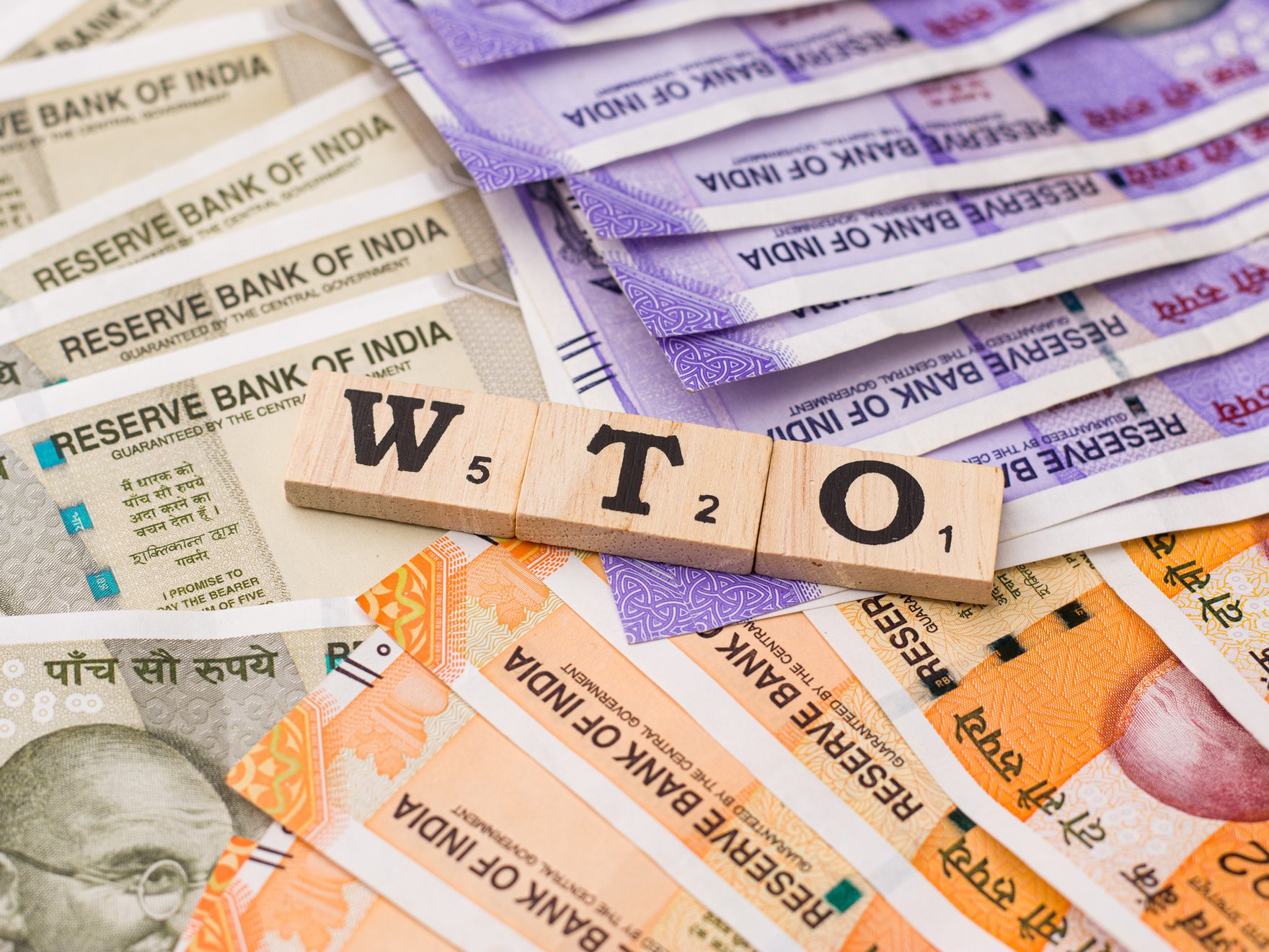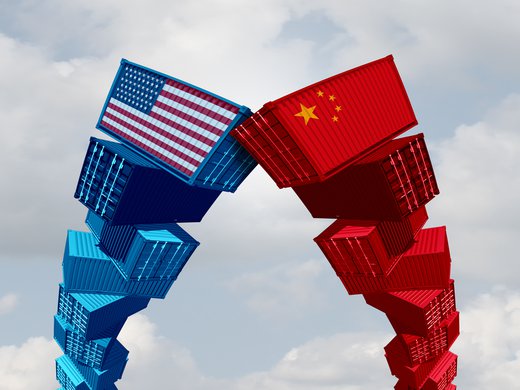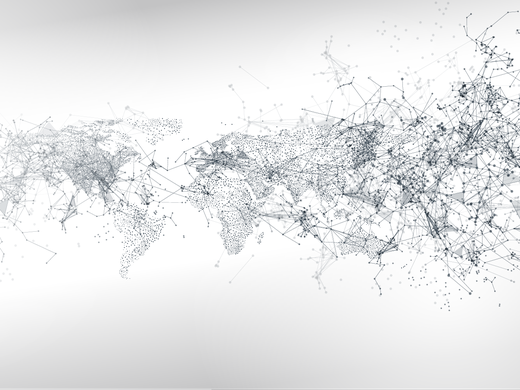The adaptation of commercial frameworks to the digital environment has been under way for many years. Indeed, the United Nations Commission on International Trade Law (UNCITRAL) Model Law on Electronic Commerce dates back to 1996, just a year after the World Trade Organization (WTO) was formed.
That the WTO does not have a functioning e-commerce regime in 2021 speaks to the difficulty this organization has had in keeping up with the evolution of the trading regime.
The WTO is trying to catch up. In 2019 it launched multilateral negotiations among 76 (now 86) members, with the aim, broadly, to arrive at an e-commerce trade facilitation agreement that could lower trading costs and enhance predictability, interoperability and trust for digital and digitally enabled trade.
Much of what the WTO is discussing is well-trodden turf. Fully fleshed-out e-commerce trade facilitation regimes have already been developed in regional trade agreements such as the Trans-Pacific Partnership (TPP) and the recent Canada-United States-Mexico Agreement (CUSMA).
That said, establishing a WTO regime would enhance the legitimacy and geographical coverage of e-commerce rules, in that it would be open to WTO members that are not parties to such regional agreements. Equally importantly, it would greatly enhance the standing of the WTO itself as an institution of relevance to modern international commerce.
Specific issues addressed in the WTO e-commerce negotiations include the usual menu seen in regional trade agreement chapters on this issue: electronic signatures, authentication, paperless trading, consumer protection (including protection of personally identifiable information), open government data, unsolicited commercial messages (spam), cross-border data flows and localization of computing facilities, among others.
But the main issue with respect to how a WTO regime will ultimately work is policy space. Different WTO members have differing interests and will place differing values on what is to be allowed freely, what is to be controlled, and what is to be prohibited.
These differences will play out in the specific measures adopted by countries in areas such as privacy (for example, allowing the use of facial recognition in public spaces by commercial entities or law enforcement); public policy objectives such as the protection of public morals and the maintenance of public order; and perhaps, most importantly, national security.
The WTO framework provides flexibility for exceptions to address these types of issues through articles XX (General Exceptions) and XXI (Security Exceptions) of the General Agreement on Tariffs and Trade (GATT) for goods; and the corresponding articles XIV, General Exceptions, and XIV bis, Security Exceptions, of the General Agreement on Trade in Services (GATS) for services. These exceptions are generally understood to apply on a technologically neutral basis. However, the GATS was framed in an era when data was simply exhaust — a by-product of commerce that could not be capitalized — and the limited use of those articles in WTO disputes provides few signposts for the digital era.
Accordingly, the real action in defining the ultimate regime will be in national regulatory sandboxes – in effect, authorized beta-testing regimes, where the specifics of rules for the digital economy are being thrashed out.
A key issue for the WTO, meanwhile, is the moratorium on the imposition of tariffs on electronic transmissions. This is important for developing countries that are seeing an erosion of tariff revenue, as formerly dutiable products, such as music recorded on compact disks, are traded as data. This issue is rolled up with that of a digital services tax, which is being addressed at the Organisation for Economic Co-operation and Development (OECD) through an agreement on the taxation of multinationals. Agreement has been reached on a 15 percent minimum tax that would preclude additional unilateral measures on digital services; however, it remains to be seen whether this will hold.
While the WTO is playing catch-up, even the most advanced regional trade agreements are struggling to keep up with the rapidly evolving technologies and the impacts they have on the economic system.
The DEPA Breaks New Ground
The most comprehensive template for a trade agreement tailored for the digitally transformed economy is the Digital Economy Partnership Agreement (DEPA) between Chile, New Zealand and Singapore.
The DEPA covers the established ground for e-commerce, as it essentially incorporates the text of the Comprehensive and Progressive Agreement for Trans-Pacific Partnership as a starting point. What’s interesting is where the DEPA goes after that, in charting the next steps to developing a fully-fledged regime.
For example, this agreement delves into issues such as digital identities, including commitments for best endeavours to foster technical interoperability or common standards, and comparable levels of protection of digital identities.
It also broaches issues such as financial technology (fintech). These are likely to be of great importance for cross-border trade as electronic payments systems, digital currencies and software applications, such as e-wallets, become a much more important part of the financial system. Fintech regulation is currently being developed primarily in the regulatory sandbox format,
Artificial intelligence (AI) is also touched on in the DEPA, albeit in cursory form. Addressing AI in trade agreements will become much more important as this technology’s role in innovation expands — for example, by calling into question the assigning of inventor/author status under intellectual property regimes.
The DEPA also creates a placeholder for competition policy, which was excluded from the Agreement Establishing the WTO but was one of four areas later discussed and agreed at the 1996 WTO Ministerial Conference in Singapore (including transparency in government procurement; trade facilitation; trade and investment; and trade and competition).
Competition policy is key now to de facto market access. That’s because of the role of platform firms. Amazon, Alibaba and other tech firms in effect create marketplaces as well as play in them, which gives them and their partner firms an asymmetric advantage. De facto national regulatory sandboxes are in play here too, with the European Union, the United States and even China all tackling the competition issues raised by the platforms on an ad hoc basis, in the absence of an established model.
So while the WTO is playing catch-up, even the most advanced regional trade agreements are struggling to keep up with the rapidly evolving technologies and the impacts they have on the economic system.
How the framework for global e-commerce develops will be shaped in important ways by the evolving geopolitical and technological environment.
Readers may recall that the original GATT emerged in 1948 following the failure to establish the intended multilateral International Trade Organization. The 23-member GATT was effectively an alliance structure that excluded the Soviet Union and its allies, after World War II. It was multilateral in name only.
The conclusion of the Cold War in 1989 resulted in what Francis Fukuyama prematurely called “the end of history” and a temporarily unipolar world; the WTO, which was formed half a decade after the fall of the Berlin Wall, was thus free to evolve toward a truly multilateral organization, including through the accession of Russia and China.
However, the economic and technological rise of China in the first decades of the twenty-first century has changed the geopolitical context. The deepening of the European Union through the formation of the euro zone can be considered a contributing factor to the multipolar structure in geo-economic terms, as it deepened the European Single Market and created a potential alternative for the US dollar as an international vehicle currency.
At the same time, the digital transformation has shifted progressively more economic (and social) activity into a borderless cyberspace that governments cannot easily police.
Further, goods and services have acquired smart labels, as AI and data analysis are applied increasingly ubiquitously across the spectrum of products (even, in some cases, to trace the origins of agricultural products from developing countries).
The founding WTO Agreement was framed for a unipolar world, in which inert goods and services were traded across borders that could be rigorously policed. Today, that original, global rules-based framework is challenged on multiple fronts in a multipolar, online world of smart products.
These differences mutually amplify the frictions emerging in the trading system.
For example, the Internet of Things has profound implications for backbone infrastructure sectors (telecommunications, transportation, energy and finance). With the digital transformation, this backbone infrastructure becomes effectively an interactive central nervous system for a nation’s economy.
These key sectors have traditionally faced stronger restrictions on international market access on national security grounds, even in the pre-digital environment. For example, Canada’s backbone infrastructure has historically been dominated by Crown corporations and heavily regulated firms:
- transportation featured Air Canada and the Canadian National Railway;
- telecommunications was closely regulated by the Canadian Radio-television and Telecommunications Commission, and broadcasting featured the Canadian Broadcasting Corporation;
- energy featured Petro-Canada and the provincial electrical utilities (Hydro One and Hydro-Québec); and
- finance was dominated by the major chartered banks, which were subject to a 10 percent ownership restriction (since raised to 25 percent) for a variety of regulatory reasons, not least of which was to prevent takeovers by foreign banks.
In the digital environment, we are in uncharted waters. And the extent of foreign participation that may be considered allowable, from a national security perspective, is unclear. Commitments made under the WTO Agreement may have to be reconsidered as the economy and society shift increasingly online.
Geopolitical conflict promises to be easily the most problematic issue, because risks related to the flow of data across a security divide are greatly amplified by the potential for hostile (as opposed to merely criminal) acts. Indeed, from a practical perspective, there is a nexus of issues related to privacy, data protection, and access by law enforcement authorities that threatens to bring down a “silicon curtain” along the geopolitical divide.
Government access to personal data held by the private sector is an issue that is currently being explored by an OECD working group. It isn’t clear how much daylight there is between what can be accessed by Western governments and what is available to Chinese authorities pursuant to a law that requires private actors to turn over data upon request. It may be observed that this issue has been raised as a rationale for complete exclusion of private sector providers from particular markets, based on their nationality.
The new Cold War between the United States and China and the acceleration of the digital transformation by the pandemic-induced intensified use of online systems have generated new and urgent pressures for regulatory intervention and the development of new international rules.
Until very recently, the digital transformation unfolded in a remarkably low-regulation environment. In part this might be ascribed to the fact that the leading digital economy, the United States, has a preference for low regulation. In part it might be ascribed to the fact that governance of the internet, the critical infrastructure of the digital economy, evolved successfully and robustly in a bottom-up fashion, featuring numerous stakeholders from civil society, business, government, academia, national and international organizations, all contributing standards and administrative functionality without an overarching framework or a central governing body. And in part, it might be ascribed to the dominant role of sophisticated superstar firms lobbying governments to pre-empt regulation — and, indeed, to the fact that governments were largely behind the curve, given the accelerated pace of innovation.
With the backlash against the technology giants, the so-called techlash, those days are gone. Meanwhile, the new Cold War between the United States and China and the acceleration of the digital transformation by the pandemic-induced intensified use of online systems have generated new and urgent pressures for regulatory intervention and the development of new international rules to set guardrails around those interventions.
In the critical area of national security – which is now being advanced in very expansive terms to include everything from access to personal data, to industrial supply chains, to university research partnerships, to all forms of advanced technology – the extent to which the digital transformation has transformed the very nature of the paradigm (in particular, the ubiquity of smart devices streaming data into the cloud) calls into question whether the bargains that were struck at the time of the formation of the WTO and the adoption of the GATS can be reasonably sustained.
It may, accordingly, be necessary to revise the bargain under the WTO Agreement between countries on opposite sides of the security divide through GATT Article XXVIII/GATS Article XXI negotiations, to withdraw commitments for most favoured nation (MFN) access in areas that are materially affected by the digital transformation and where the flow of data across the security divide represents an unacceptable risk.
For example, if telecommunications equipment from suppliers across the security divide (e.g., Huawei equipment marketed in the United States) is deemed to pose unacceptable security risks, the existing WTO commitments of the US and China should be negotiated down, rather than the exclusion being driven by invocation of opaque national security grounds that invites retaliation and creates a slippery slope that could lead to widespread abuse – which, it may be recalled, was a major concern at the very establishment of the GATT.
Renegotiation naturally involves compensation; this may be a stumbling block from a short-sighted perspective. But in the long run, an upfront, open and low-rhetoric renegotiation seems infinitely preferable to a high-rhetoric acrimonious decoupling.
More generally, the way forward may depend on increased reliance on an old tool: conditional MFN treatment, in areas where parties agree — or agree to disagree — to appropriate protocols to manage the risks in the digital environment.
Finally, as an overarching imperative, a détente agreement to narrow the range of issues subject to the new national security concerns needs to be reached.
In the age of machine learning, national security cannot rest on what are likely to be fleeting technology leads or gaps. There are much more pressing issues facing the human community that require the resources currently being wastefully expended on the technology arms race.



